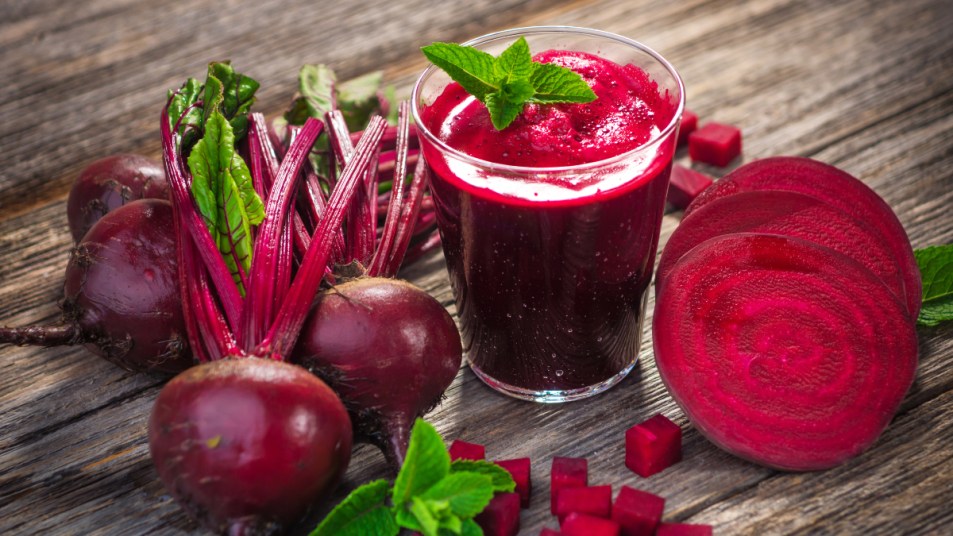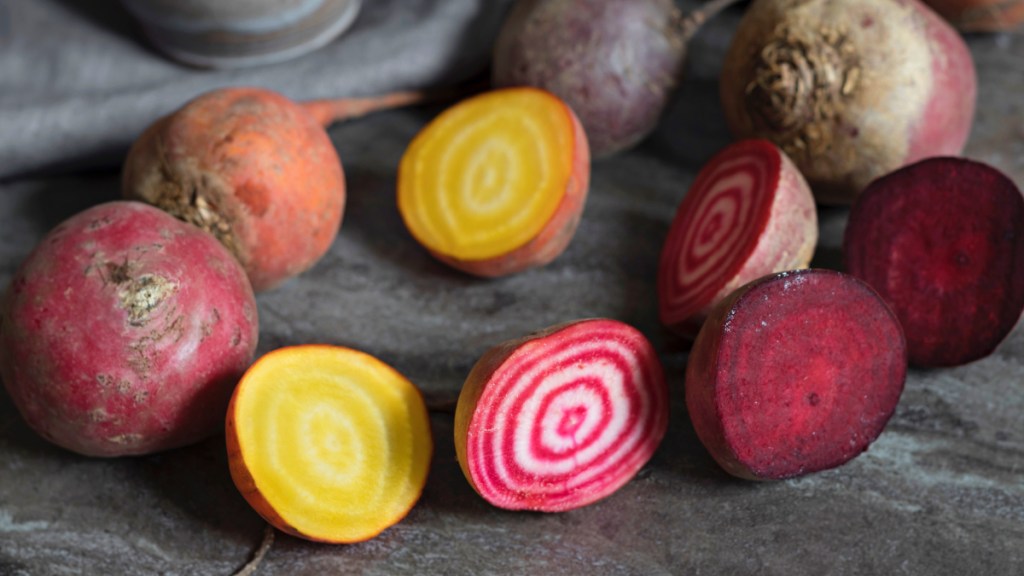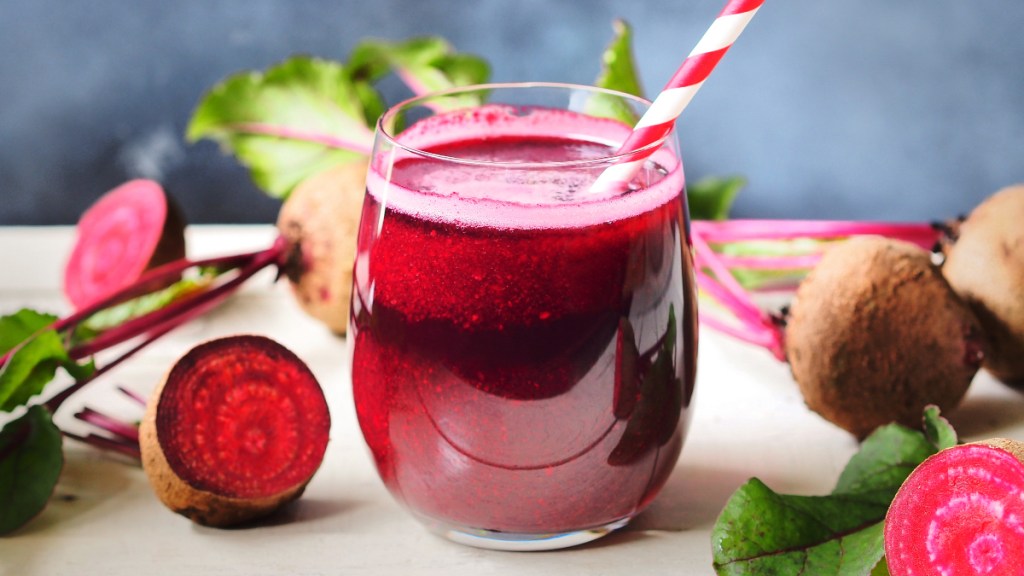Top Doc: Beetroot Is the Superfood That Keeps Your Heart Healthy, Vision Sharp + So Much More
Plus, the best way to eat the vibrantly hued veggie to maximize the health benefits

We’re all looking for those simple, little changes we can make to our lives that yield big health benefit. And for that, beets can’t be beat! They’re delicious and easy to cook with, plus they can improve your health from head to toe. It’s no wonder health experts consider beets one of nature’s superfoods. Here, how to harness beetroot benefits for females.
What is beetroot?
The classic beet, or beetroot, is a root vegetable from the plant Beta vulgaris that has an earthy-sweet flavor. They’re grown and used throughout North America, northern and eastern Europe and parts of Asia. Raw beets are about 88% water. “They’re a good source of vitamins like folate and minerals like manganese,” adds William Li, MD, physician and medical director of the Angiogenesis Foundation and author of bestselling book Eat to Beat Disease.
It’s not surprising, then, that beets have a long history of medicinal uses. They’re actually descended from sea beets, the wild plant grew along the shows of the Mediterranean and the coasts of Europe and North Africa. Since ancient times, beets have been used for treating constipation and improving circulation. (Click through to learn how constipation can cause back pain — and how to cure it.)
When we think of beetroot, most of us recall the sweeter, bright purple variety commonly used in dishes like borscht. But there are other varieties, like green and yellow beets, that have a more earthy and nutty flavor. Another variety, called sugar beets, were common in the 19th century as an alternative sweetener. The roots and leaves are edible, and they can be boiled, steamed, roasted or even eaten raw.

Beetroot benefits for females
Good news: You don’t need to overhaul your diet or log long hours at the gym to improve your health. Simply working a little beetroot into your diet can deliver powerful health benefits for females. Here’s where the veggie really shines:
1. Beetroot improves blood pressure
We know about the common health hassles that come with menopause — hot flashes, weight gain, irritability. But hormonal changes can trigger unexpected issues, too. One such example: You might experience a change in how your body absorbs salt, leading to an increase in blood pressure. That can cause headaches, heart palpitations and anxiety. Plus, elevated blood pressure over a prolonged period can damage blood vessels, increasing your stroke risk, says Dr. Li. “High blood pressure also forces your heart to work much harder than usual, which can eventually contribute to heart failure,” he adds.
To the rescue: beetroot, which is proven to lower systolic blood pressure. That’s because the vegetables contain dietary nitrates, “chemicals derived from nitrogen that is naturally found in soil,” explains Dr. Li. “They are chemically modified in the body to make other types of chemicals such as nitric oxide.” That’s key for sending signals to your cells to help maintain a healthy blood flow that keeps your BP in a safe range. (Click through to see more drinks that lower blood pressure.)
2. Beetroot boosts energy
If you’re like us, you’ve likely noticed your energy levels aren’t quite what they used to be. And that can leave you feeling exhausted by day’s end or make it hard to enjoy your favorite hobbies. Fortunately, beetroot can restore your vitality. Beets enhance the function of mitochondria, your cellular energy engines that help you do everything from chase after your grandkids to walk up the stairs.
That means you’ll feel stronger and more energized day and day out. Plus, the veggie can enhance athletic performance, making exercise easier. The better blood flow provided by beets helps nourish the heart, lungs and muscles to improve function. Indeed, a study in Contemporary Clinical Trials Communications found that beetroot improved mobility in postmenopausal women within 8 weeks. (Strengthening bones is also key for mobility. Click through for natural ways to bolster bones if you don’t want to take osteoporosis drugs.)

3. Beetroot steadies blood sugar
Whether you sip a glass of beetroot juice with dinner or enjoy the whole veggie as part of your meal, beets can help keep your blood sugar steady. According to researchers reporting in the Journal of Nutritional Science, folks who had beetroot juice had a lower insulin response and better glucose control after eating. “Beets contain bioactives like betanin, which has antioxidant and anti-inflammatory properties,” explains Dr. Li. (He notes this study was done on people without diabetes, so it’s unclear if folks who already have the condition will experience the same benefits.)
4. Beetroot eases inflammation
Inflammation is a major driver of disease. In fact, it can contribute to everything from heart disease to gastrointestinal disorders to obesity. The good news: Beetroot’s ability to help the body produce nitric oxide can help. “Nitric oxide can dampen inflammation as part of its role in maintaining health,” says Dr. Li.
Research in the journal Human Nutrition & Metabolism backs this up. Study authors found that betalains, the pigments that give beetroots their bright purple hue, can reduce inflammation. And for those experiencing joint aches and pains from inflammation, researchers reporting in Nutrition and Dietary Supplements found beets can reduce discomfort.
5. Beetroots improves digestion
Goodbye, GI upset! Fiber-rich beetroot enhances gut health, which is vital for digestion and overall health. The roots contain both soluble and insoluble fiber. These fibers raise levels of healthy microbes in the gut linked to better nutrient absorption, stronger intestinal walls and better digestion. If you’re struggling with constipation, the fiber may also give you some relief. When folks in one U.K. study increased their fiber intake, 77% of them saw improvements in constipation.
The fiber benefits of beetroot for females don’t just end there, however. “A well-nourished microbiome, in turn, leads to a healthier gut, better metabolism, less inflammation in the gut as well as elsewhere in the body, and better overall immunity,” adds Dr. Li. (Click through for more foods that are good for constipation.)

6. Beetroot safeguards the heart
While we’ve covered how nitric oxide from beets helps lower your blood pressure, this potent compound can do more than just that. It also protects against heart disease, stroke and other heart-related health issues. “Improved blood flow from nitric oxide can support circulatory health and contribute to lowering the risk of heart disease and stroke caused by high blood pressure,” explains Dr. Li. Indeed, Queen Mary University of London researchers found that regularly sipping beetroot juice can lower the risk of heart disease. (Click through to learn why beetroot is one of the best potassium-rich foods, too.)
7. Beetroot sharpens focus
Dietary nitrates are once again a hero when it comes to supporting brain function. When nitric oxide enhances your blood flow, it keeps your mind sharp. “The same improved circulation that takes place in muscle would also take place in the brain, leading to improved energy levels and better mental alertness,” says Dr. Li. Plus, enhancing blood flow and lowering blood pressure through dietary nitrates supports the frontal lobe, your brain’s working memory and decision-making center.
8. Beetroot protects vision
Age-related macular degeneration (AMD), or a blurriness in your central vision, is the leading cause of vision loss. Thankfully, beets can help dial down your risk of the sight-robbing condition. Research in the Journal of the Academy of Nutrition and Dietetics found a higher intake of dietary nitrates from beets lowered AMD risk 35%. Once again, improved blood flow is to thank, since your body is better able to shuttle oxygen and nutrients to your eyes to support healthy vision.
Bonus: Dr. Li adds that beet greens, the leafy part of the plant that grows above ground, also contains a large amount of lutein and zeaxanthin, two key nutrients for reducing risk of AMD.
How to get beetroot benefits for females
Beets brim with health-boosting nutrients regardless of how you enjoy them. However, “raw beets have higher amounts of nutrients than cooed beets,” says Dr. Li, who adds that juicing can be an effective way to get the vegetable’s nutrients. “That said, cooking beets is a tasty way to incorporate them into a meal,” he adds. And in happy news, beets turn out delicious whether they’re boiled, steamed, roasted or grilled. Dr. Li personally enjoys roasted beets in a healthy salad topped with pistachios and a light drizzle of olive oil and balsamic vinegar.

For more superfood health boosters:
Could This TikTok-Trendy Tea Be the Next Superfood? What to Know About Chaga
Lucuma Is The Maple-Caramel Superfood Of Our Dreams — And It’s Great for Diabetics!
CDC Calls It the “World’s Healthiest Food” — Here’s How You Can Benefit From Watercress
This content is not a substitute for professional medical advice or diagnosis. Always consult your physician before pursuing any treatment plan.














